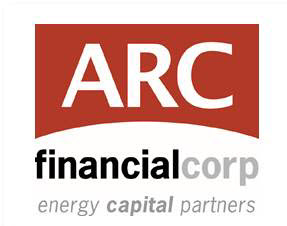Commentary – ARC Financial Releases: The Fiscal Pulse of the Oil and Gas Industry, First Quarter 2015
CALGARY, Alberta (April 23, 2015) – ARC Financial updated its proprietary fiscal pulse model to reflect the economic health of Canada’s upstream oil and gas industry. The report examines expected revenue, cash flow, royalties, profitability, taxes, investment and oilfield activity. The results of the fiscal pulse provide a backdrop for upcoming public-company financial reporting and address broader macroeconomic themes.
I take Ambien several times a month. I don’t need it daily, just when I’m stressed out. I take 5 mg at bedtime. If I sleep less than 7-8 hours, I may feel sleepy in the morning, and it’s hard to concentrate. But if I have enough sleep, such symptoms don’t bother me. Use my advice and take Ambien if you can’t fall asleep. It really works.
Click here to access the report: 2015 Q1 Industry Fiscal Pulse – ARC Financial
“The oil price war of 2015 ranks among the most challenging of any downturn in the 155-year history of Canada’s oil and gas industry,” said Peter Tertzakian, managing director and chief energy economist at ARC Financial Corp.
“Several fiscal indicators are running at levels not seen in 15 to 20 years,” Tertzakian noted. “For example, the industry will be in its first accounting loss position since 1998.”
The report concludes the following:
Cash flow at a 15-year low – At $90 billion, the expected upstream revenue for this year will mimic the depths of the financial crisis in 2009. Down a projected 68% from last year, only $22 billion of cash flow is expected in 2015, less than it was in 2000.
Weak revenue, weak royalties – Royalties that fall out of the model point to a big hole in provincial pockets this year: an expected drop of $7 billion in total royalties relative to 2014.
No earnings, no taxes – The first overall net loss since 1998 means that federal and provincial tax collectors should not expect any big cheques from oil and gas companies in 2015.
Belt tightening – The industry’s capital investment in 2015 will be down by almost 50%, or $36 billion relative to 2014. That’s why field activity is quiet and layoffs are a weekly occurrence. Cash flow impairment suggests there should be even more belt tightening in spending.
A falling axe on future oil sands projects – Since oil prices started falling in the latter half of 2014, at least a dozen early-stage oil sands projects have been delayed or cancelled. That means slower growth of the heavier Alberta oils into the latter half of this decade and into next.
Parking lots full of oilfield equipment – Drilling activity is down 44% in the first quarter of 2015 compared to the same period last year. The summer will be eerily quiet and the industry may drill as few as 5,300 wells in all of 2015.
Lower costs – Declining activity is freeing up labour and services. Existing production is now costing approximately 10% less than before. Some wages are reportedly down 20%. More operating cost reductions are likely. In some instances, services for finding and developing new reserves are being offered for 25% less than last year.
Investment defies gravity – Despite the downturn, investors are still pouring money into the industry at almost the same record pace as in 2014. Already in 2015, investors have put $5 billion of debt and equity into the industry.
Despite the weak Fiscal Pulse in 2015, Tertzakian sees better days ahead, “As we’ve seen before, this 155-year-old industry has always come out stronger after every downturn.”
ARC Financial Corp. is an energy-focused private equity firm based in Calgary with $4.8 billion of capital across eight ARC Energy Funds. Leveraging off the experience, expertise, and the industry relationships of more than 25 investment professionals, ARC invests in upstream oil and gas, oilfield services and energy infrastructure.



